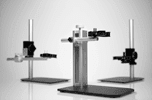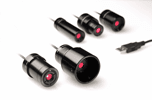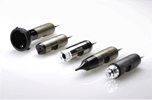EDOF (Extended Depth of Field)
 ‘Extended Depth of Field, also known as focus stacking, is a digital image processing technique which combines multiple images taken at different focus distances to give a resulting image with a greater depth of field (DOF) than any of the individual source images. Focus stacking can be used in any situation where individual images have a very shallow depth of field.’ (source: Wikipedia)‘Extended Depth of Field, also known as focus stacking, is a digital image processing technique which combines multiple images taken at different focus distances to give a resulting image with a greater depth of field (DOF) than any of the individual source images. Focus stacking can be used in any situation where individual images have a very shallow depth of field.’ (source: Wikipedia)
‘Extended Depth of Field, also known as focus stacking, is a digital image processing technique which combines multiple images taken at different focus distances to give a resulting image with a greater depth of field (DOF) than any of the individual source images. Focus stacking can be used in any situation where individual images have a very shallow depth of field.’ (source: Wikipedia)‘Extended Depth of Field, also known as focus stacking, is a digital image processing technique which combines multiple images taken at different focus distances to give a resulting image with a greater depth of field (DOF) than any of the individual source images. Focus stacking can be used in any situation where individual images have a very shallow depth of field.’ (source: Wikipedia)
Some Dino-Lite models offer this special technique, the EDOF capture mode can take several pictures at different levels of focus and stack them into a clear image automatically with 1 click of the mouse. The EDOF images maintain the picture quality from its original pictures and can be stored and viewed in the DinoCapture 2.0 software. All AM4815xx and AM7915xx models include EDOF technology.
For more information on how to use this feature, please click here.
(*At the moment EDOF only functions under Windows OS)
EDR (Extended Dynamic Range)
 EDR is a set of techniques used in imaging and photography to reproduce a greater dynamic range of luminosity than possible using standard digital imaging or photographic techniques.
EDR is a set of techniques used in imaging and photography to reproduce a greater dynamic range of luminosity than possible using standard digital imaging or photographic techniques.
EDR images can represent a greater range of luminance levels found in real-world scenes, from direct sunlight to faint nebula. It is often achieved by capturing and then combining different exposures of the same subject matter (source: Wikipedia). EDR (Extended Dynamic Range) is an image processing tool exclusive to some of the Dino-Lite Edge models (DinoCapture 2.0 version 1.4.8 and higher). For surfaces with large variation in brightness, the EDR capture tool can be ideal for capturing a more neutral image of the surface by only a few clicks. The EDR capture mode takes 3 pictures at different exposure levels (standard, underexposed and overexposed) and stacks them into a clear image automatically with 1 click of the mouse. The EDR images can be stored and viewed in the DinoCapture 2.0 software. All AM4815xx, AM7815 and AM7915xx models include EDR technology.
For more information on how to use this feature, please click here.
(*At the moment EDR only functions under Windows OS)
AMR (Automatic Magnification Reading)
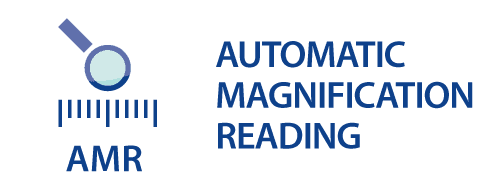 The AMR function automatically detects and displays the magnification of the Dino-Lite. The magnification is displayed within the Dino-Lite software and stored with the captured picture. The AMR function simplifies the measuring process and improves the accuracy of the measurement. AMR is recommended when high precision and/or calibrated (calibration is done manually) measurements need to be made.
The AMR function automatically detects and displays the magnification of the Dino-Lite. The magnification is displayed within the Dino-Lite software and stored with the captured picture. The AMR function simplifies the measuring process and improves the accuracy of the measurement. AMR is recommended when high precision and/or calibrated (calibration is done manually) measurements need to be made.
(*At the moment AMR only functions under Windows OS)
FLC (Flexible LED Control)
 With the Flexible LED Control (FLC) function the Dino-Lite LED’s can be controlled and adjusted. The LED’s on the Dino-Lite models with the FLC function are divided in 4 different quadrants which can be adjusted separately. 6 levels of illumination can be chosen. The FLC function is useful when objects need to be illuminated from the side or when certain parts of the object need more or less light.
With the Flexible LED Control (FLC) function the Dino-Lite LED’s can be controlled and adjusted. The LED’s on the Dino-Lite models with the FLC function are divided in 4 different quadrants which can be adjusted separately. 6 levels of illumination can be chosen. The FLC function is useful when objects need to be illuminated from the side or when certain parts of the object need more or less light.
(*At the moment FLC only functions under Windows OS)
Polarizing filter/ polarizer
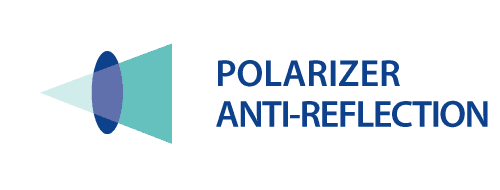 Many Dino-Lite models offer a built-in polarizing filter. A polarizer is an optical filter that polarizes the light passing through it, which is used for reducing reflections on shiny objects and for improving contrast. The Dino-Lite polarizer can be switched on/off or can be adjusted to offer full or half polarization.
Many Dino-Lite models offer a built-in polarizing filter. A polarizer is an optical filter that polarizes the light passing through it, which is used for reducing reflections on shiny objects and for improving contrast. The Dino-Lite polarizer can be switched on/off or can be adjusted to offer full or half polarization.
A polarizer filter is highly recommended when working with shiny or reflective objects such as metal, plastic, glass, jewelry or electronics, but also for use in dermatology for skin or scalp check.
Co-axial lighting
 With Coaxial Illumination the light is on the axis of the optical path and is therefore only illuminating the part of the sample that is also seen by the microscope. Inside the Dino-Lite co-axial models there is an LED built-in on the side. This LED shines its light onto a mirror which acts like a beam splitter that projects the light directly onto the sample and also allows the image that is formed to be returned straight up to the Edge sensor. The most commonly used application for Coaxial illumination in the semiconductor industry is the quality control and inspection wafer plates. With standard brightfield illumination the structures and overlaying structures are not all visible, while with coaxial illumination these details will appear. Other applications are the inspection of polished and chemically treated metal surfaces, inspection of microchips, microelectronics and many other surfaces that appear flat or without contrast when using brightfield illumination.
With Coaxial Illumination the light is on the axis of the optical path and is therefore only illuminating the part of the sample that is also seen by the microscope. Inside the Dino-Lite co-axial models there is an LED built-in on the side. This LED shines its light onto a mirror which acts like a beam splitter that projects the light directly onto the sample and also allows the image that is formed to be returned straight up to the Edge sensor. The most commonly used application for Coaxial illumination in the semiconductor industry is the quality control and inspection wafer plates. With standard brightfield illumination the structures and overlaying structures are not all visible, while with coaxial illumination these details will appear. Other applications are the inspection of polished and chemically treated metal surfaces, inspection of microchips, microelectronics and many other surfaces that appear flat or without contrast when using brightfield illumination.
 English
English  Français (French)
Français (French)  Deutsch (German)
Deutsch (German)  Español (Spanish)
Español (Spanish)  Nederlands (Dutch)
Nederlands (Dutch)  Italiano (Italian)
Italiano (Italian)  Dansk/Norsk
Dansk/Norsk  Svenska (Swedish)
Svenska (Swedish)  Polski (Polish)
Polski (Polish)  Čeština (Czech)
Čeština (Czech)  Türkçe (Turkish)
Türkçe (Turkish)  Русский (Russian)
Русский (Russian)  Arabic (اللغة العربية)
Arabic (اللغة العربية) 
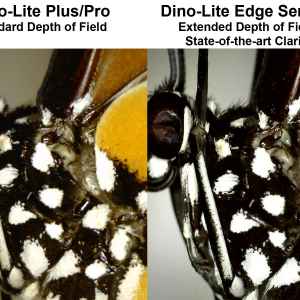
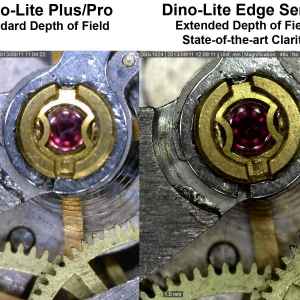
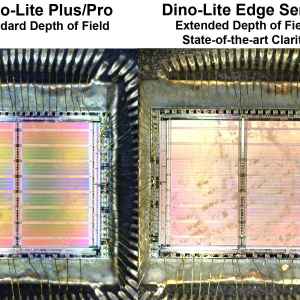

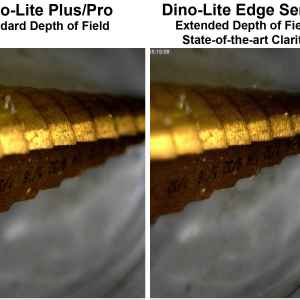
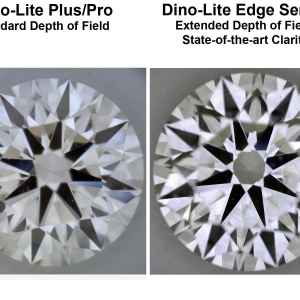


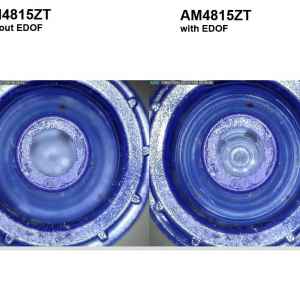
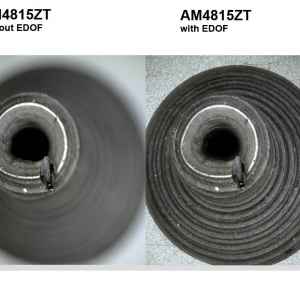
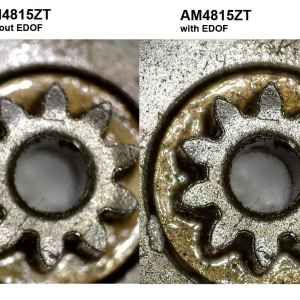
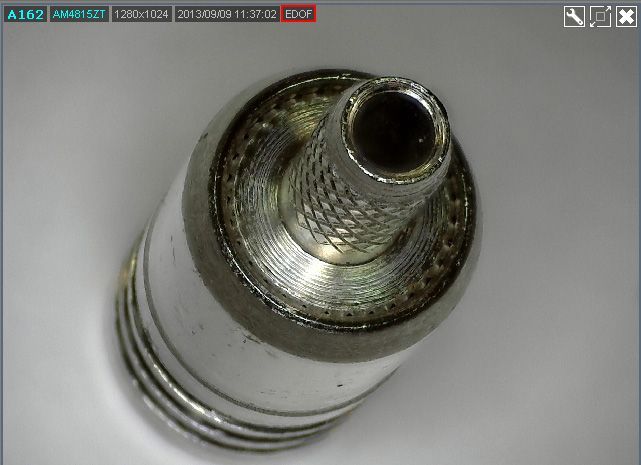
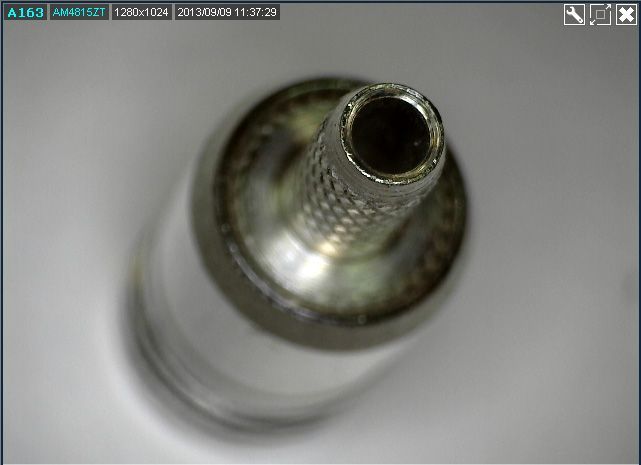
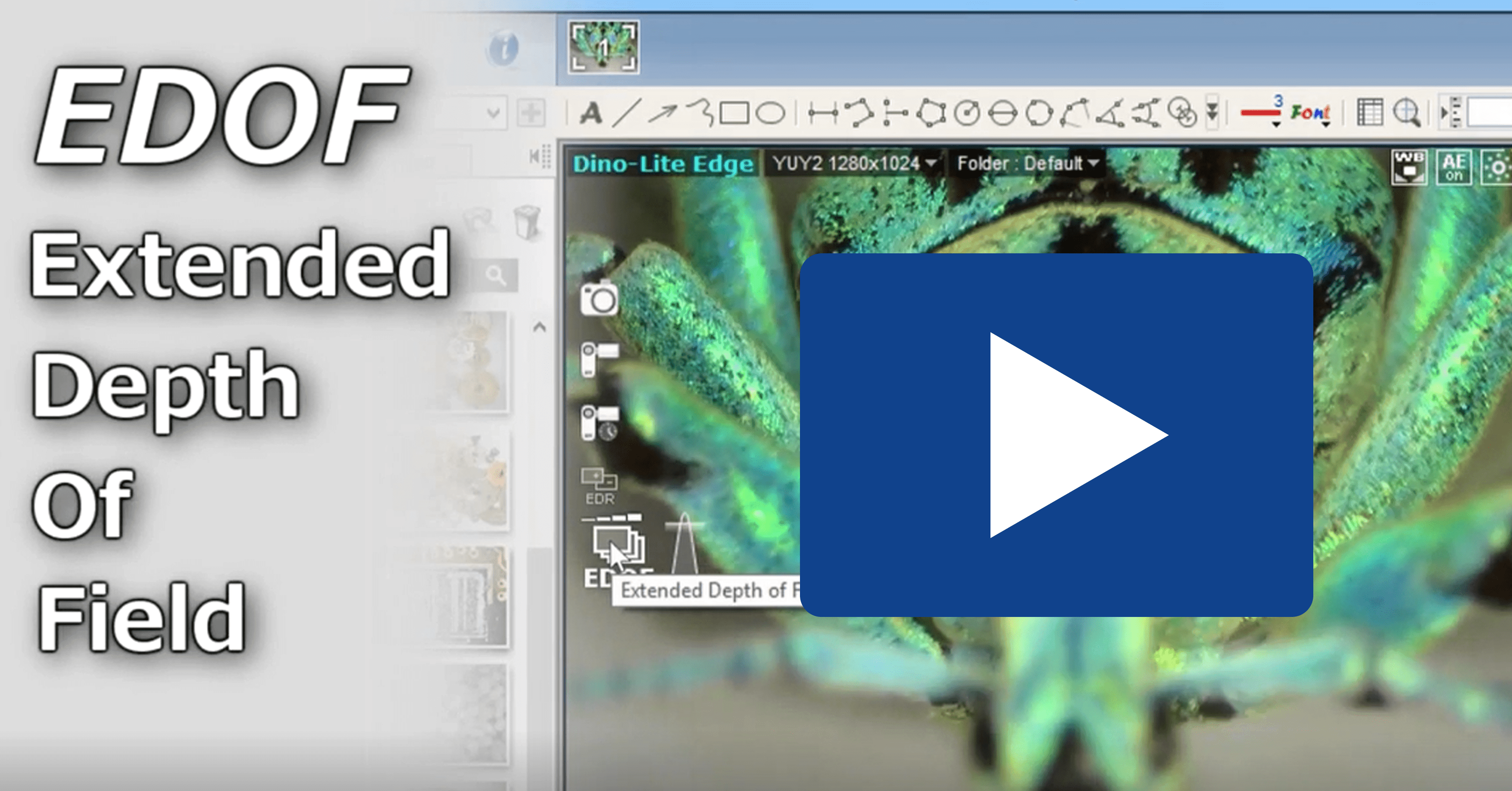
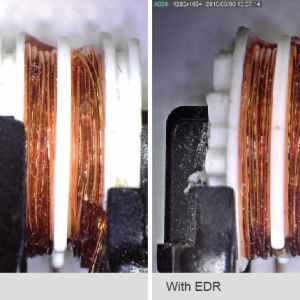

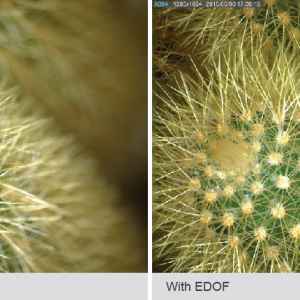
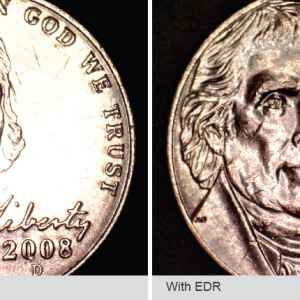
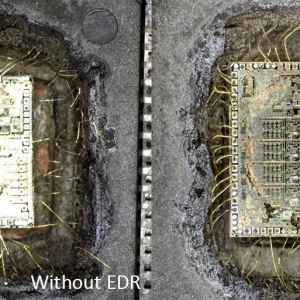
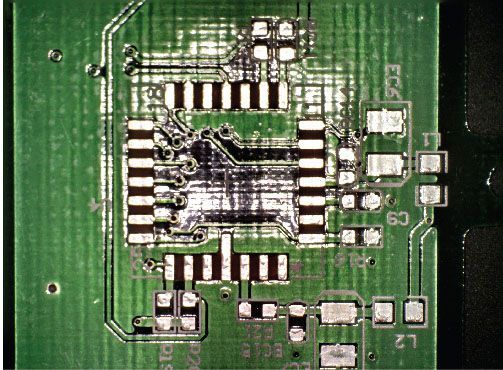
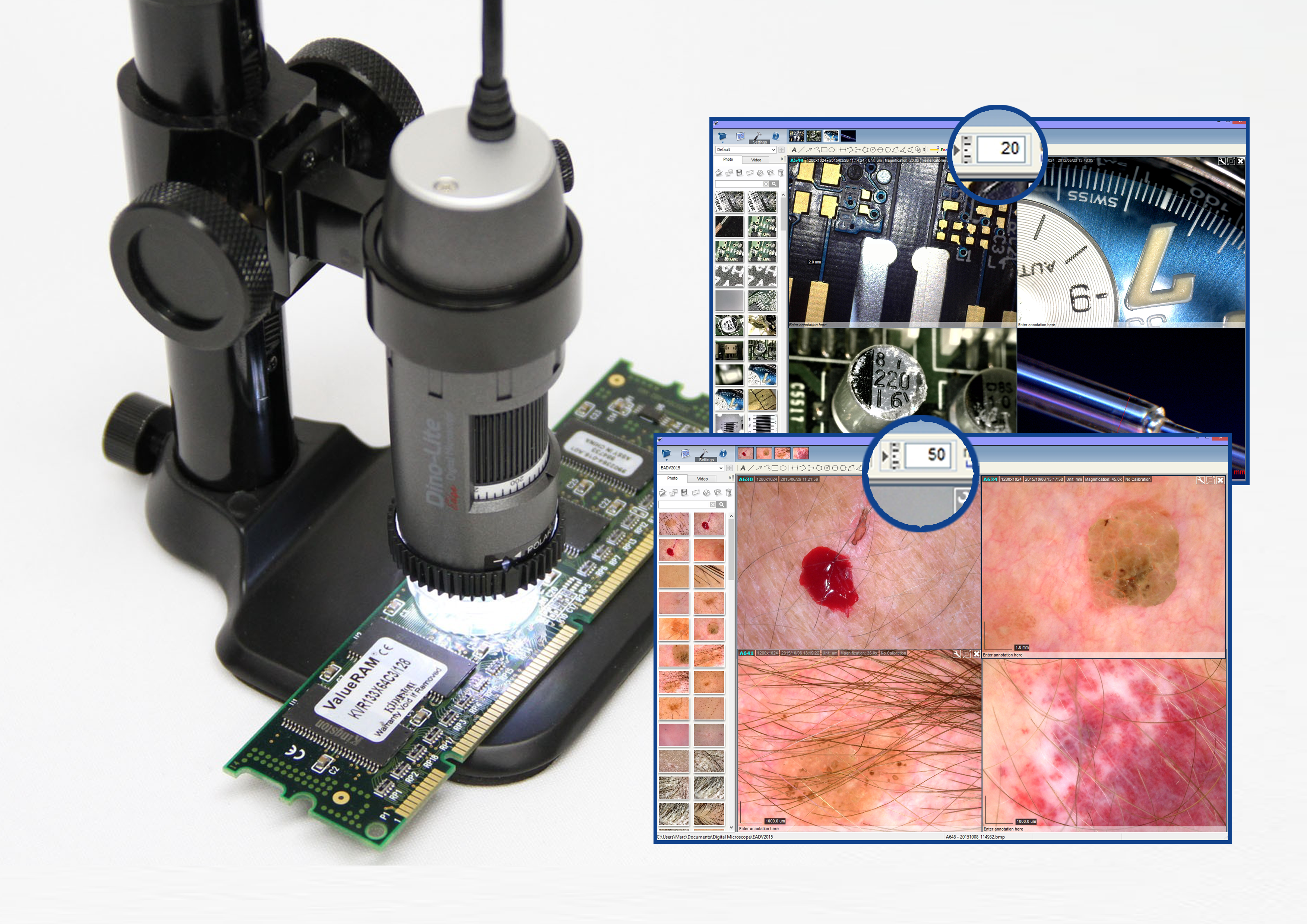
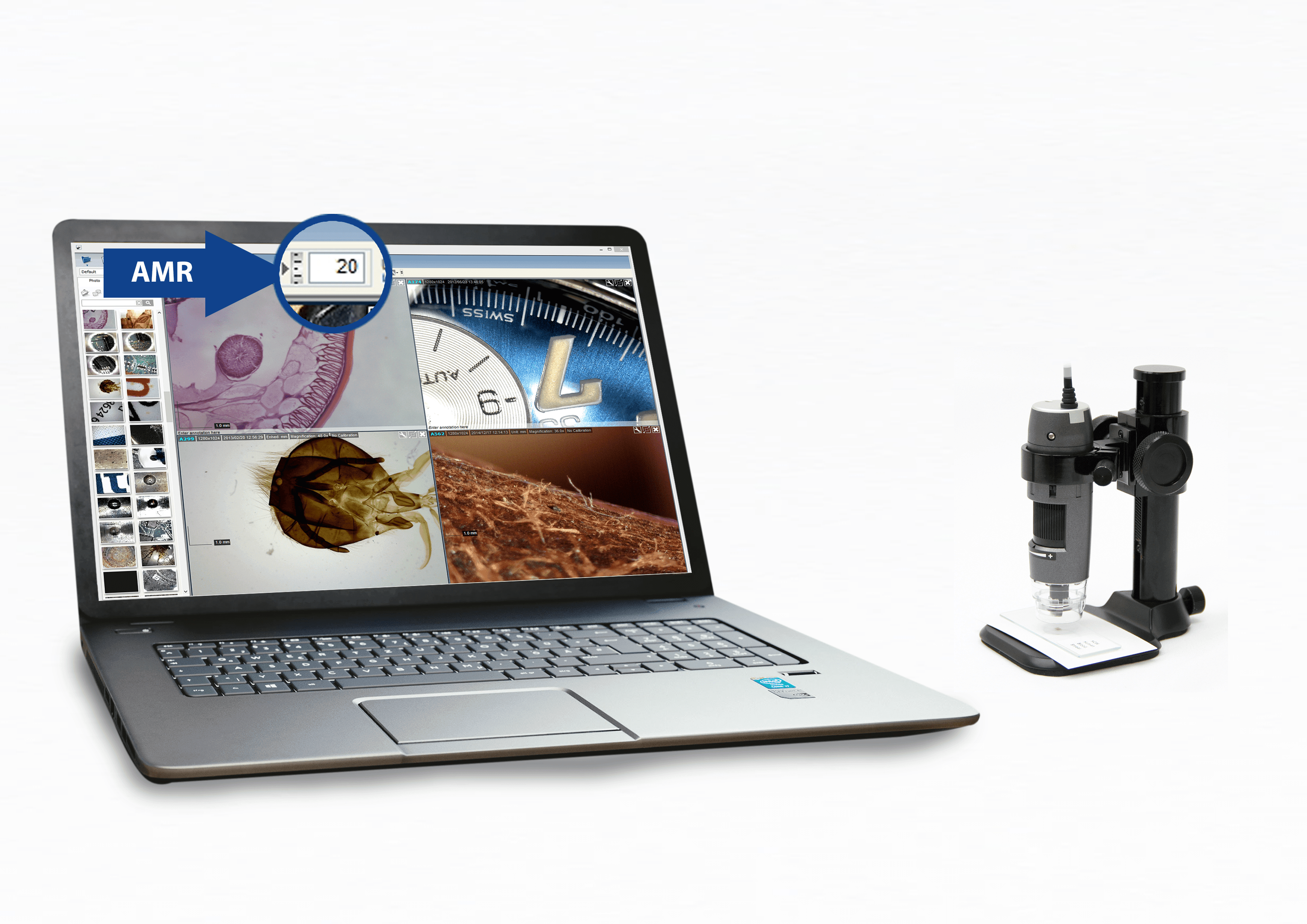
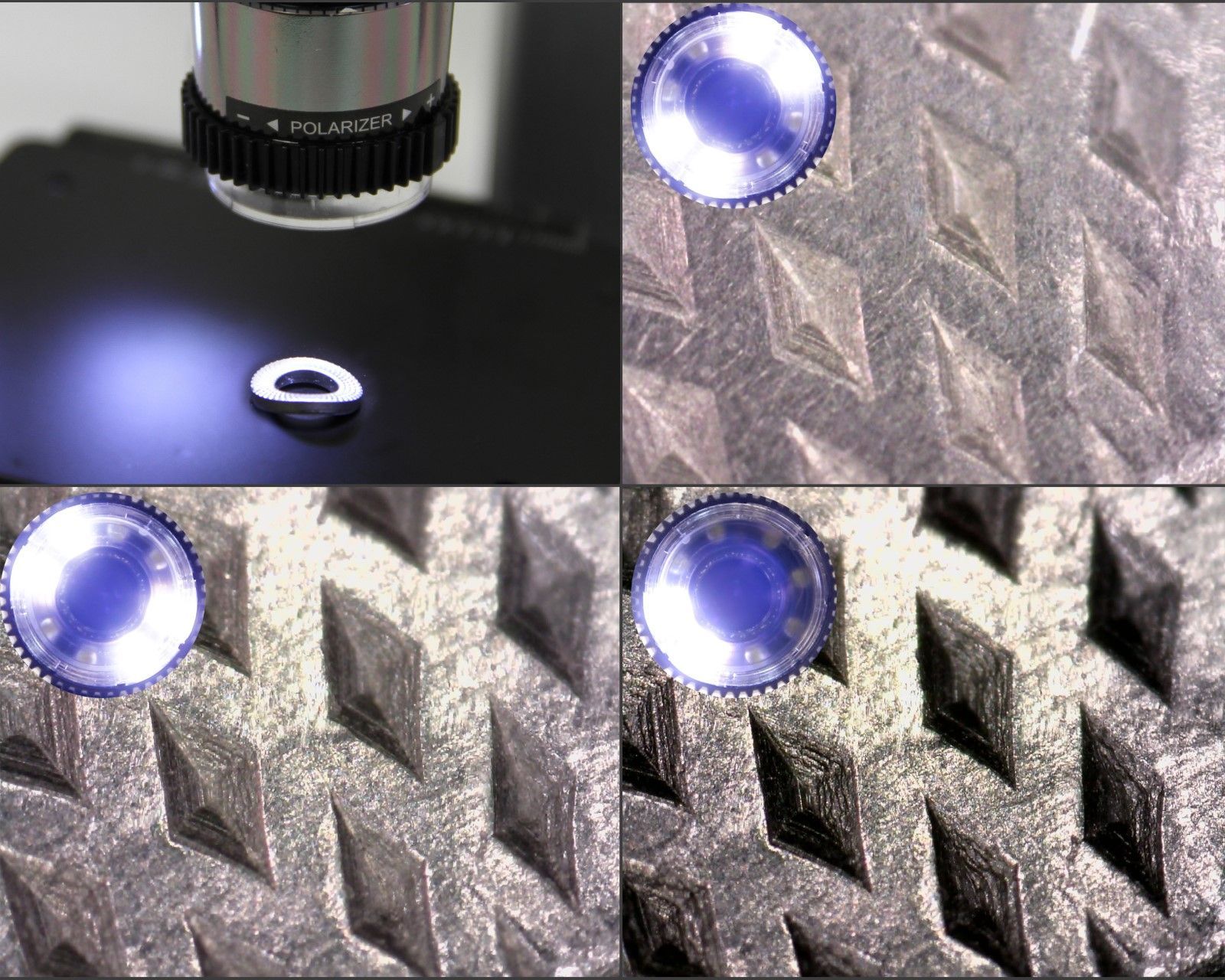

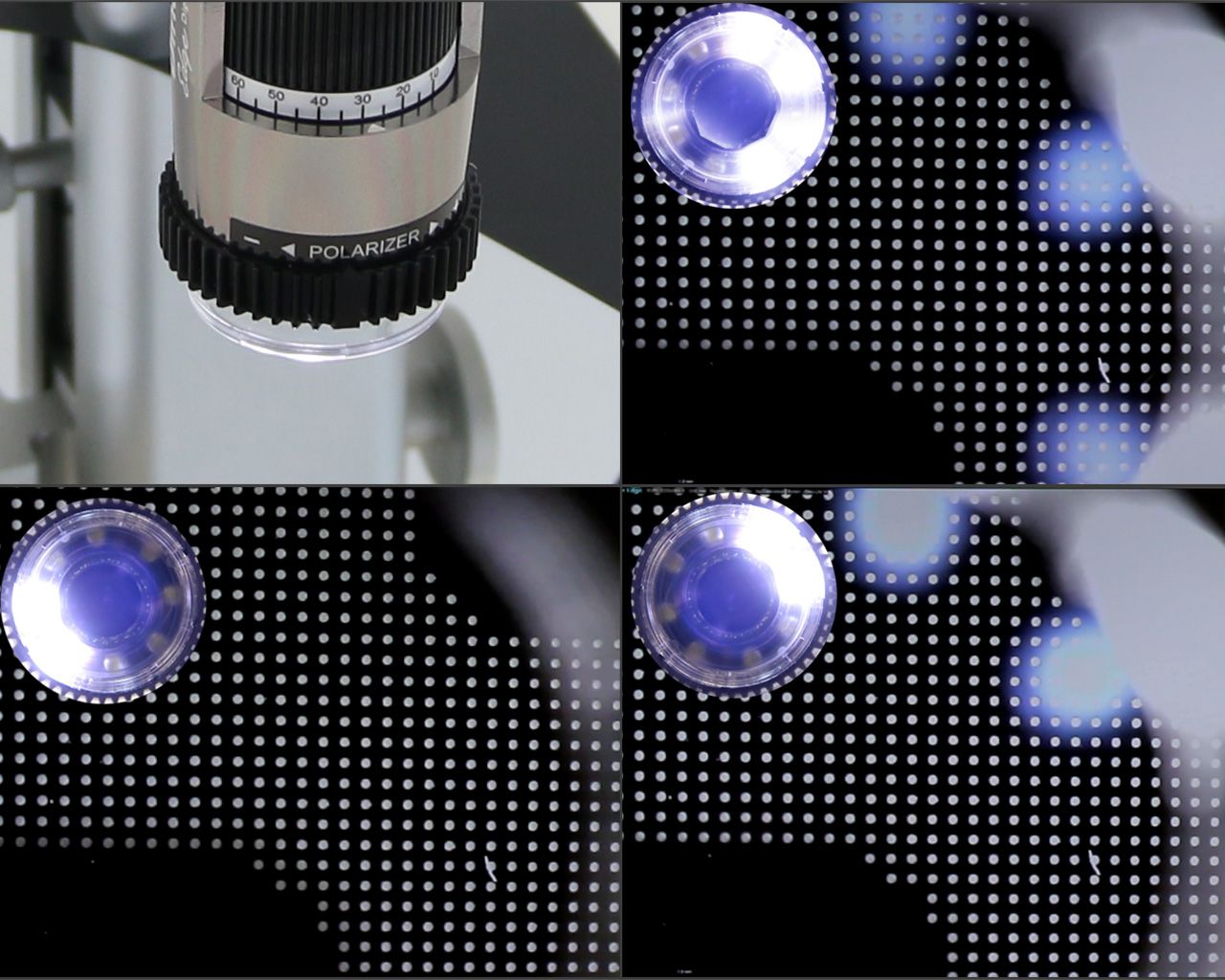
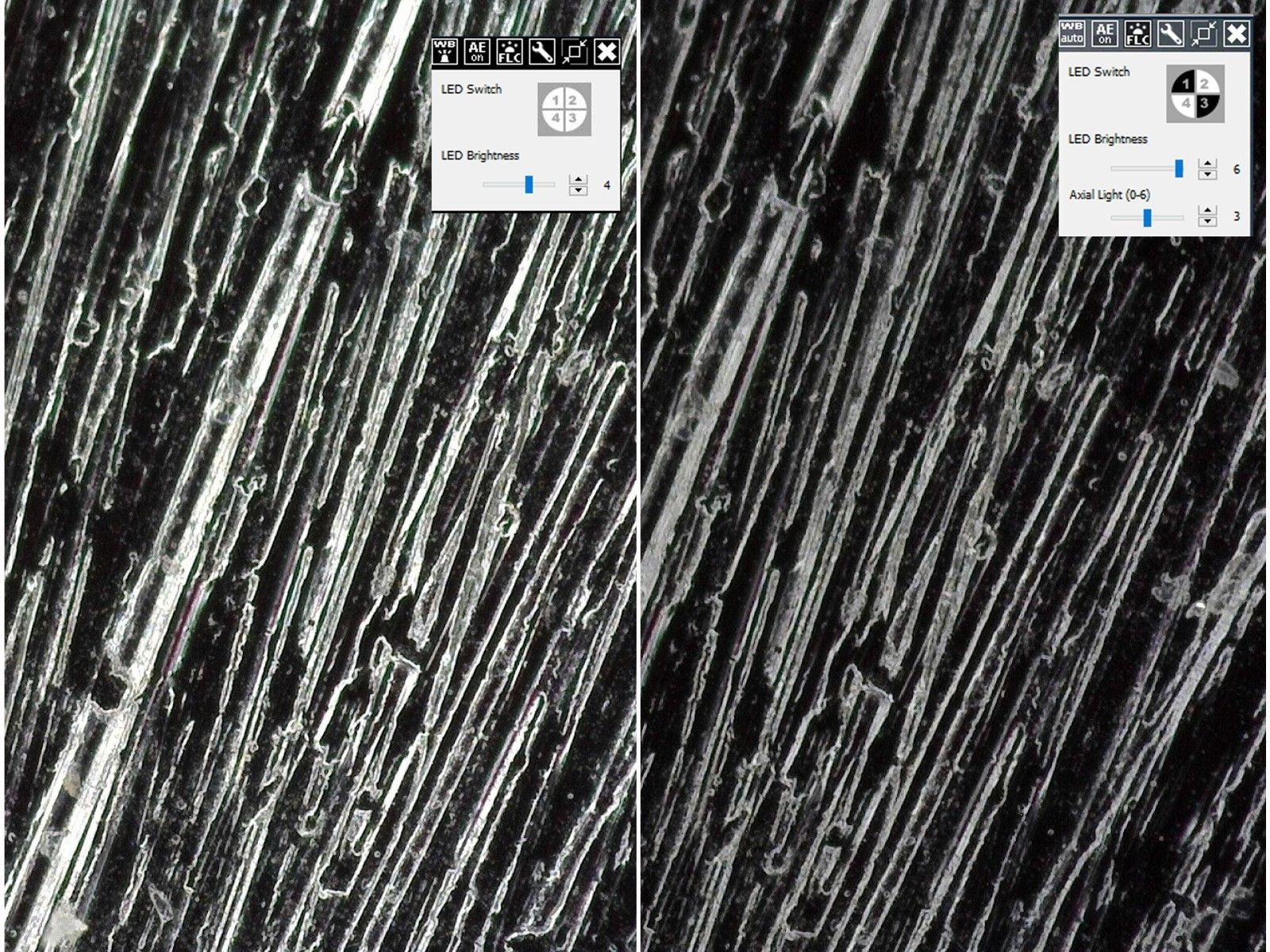
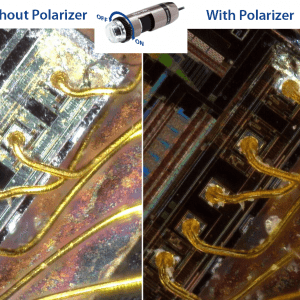
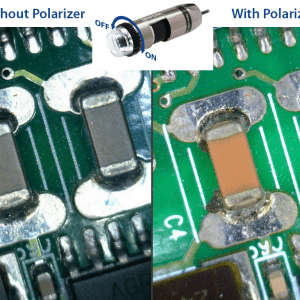
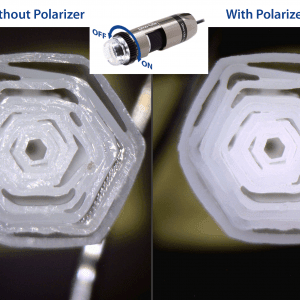
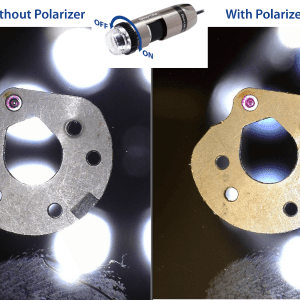
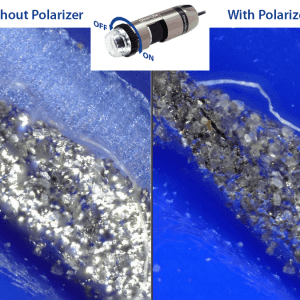
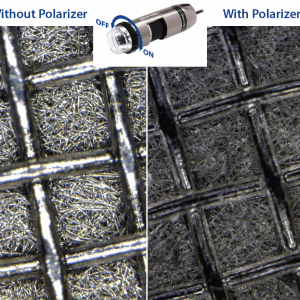
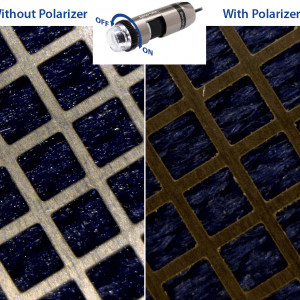
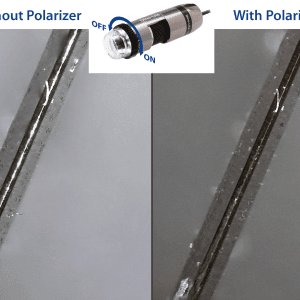

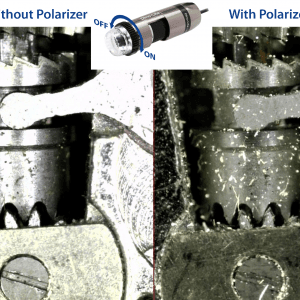
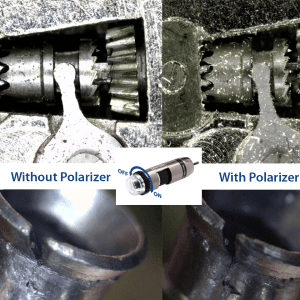
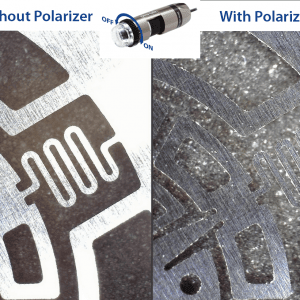
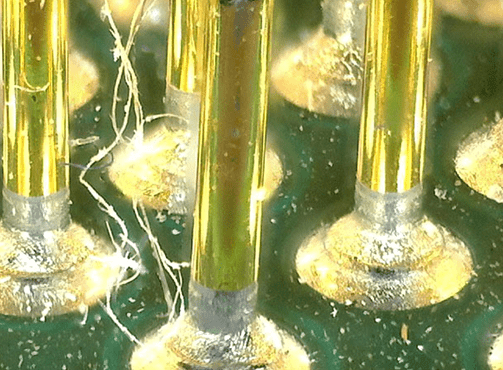
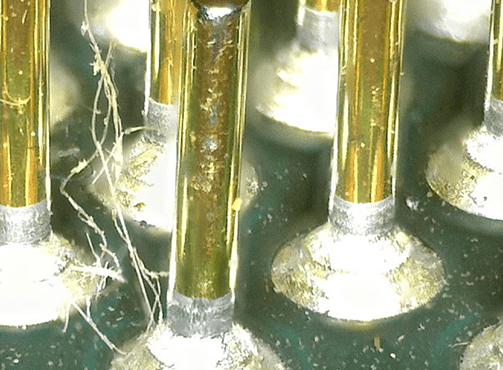
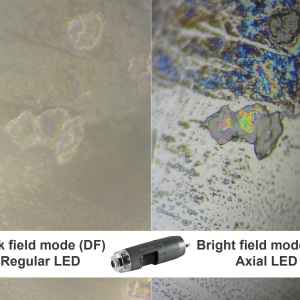

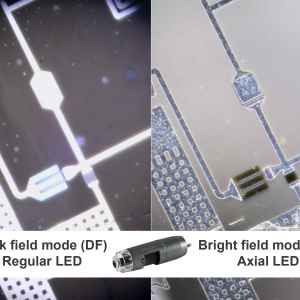
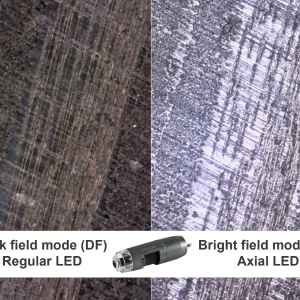
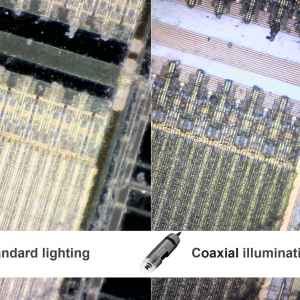
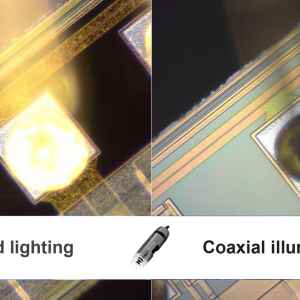
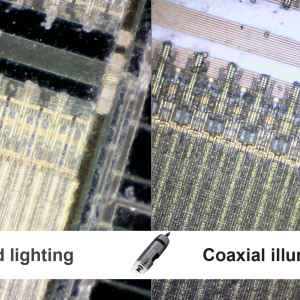
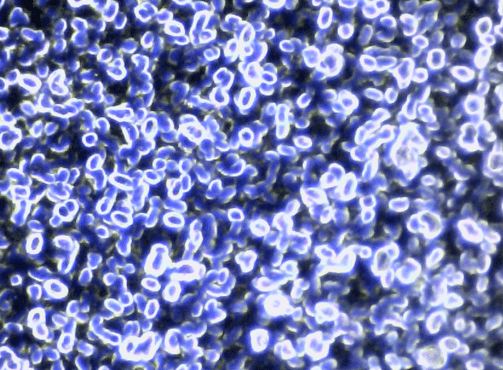
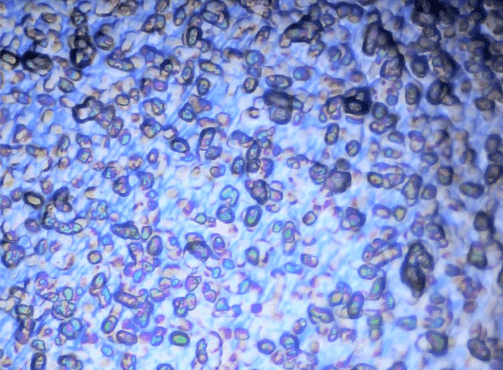
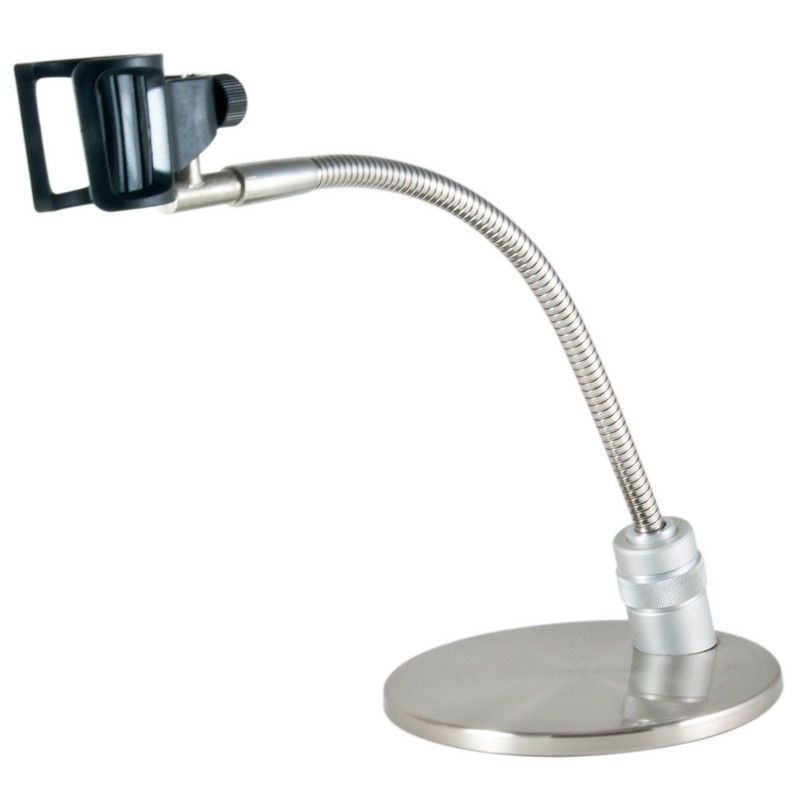 Round metal base with flexible arm and holder for the Dino-Lite. The MS33W has the possiblility to vary the height (appr. 15 mm) with a turning knob in the base.
Round metal base with flexible arm and holder for the Dino-Lite. The MS33W has the possiblility to vary the height (appr. 15 mm) with a turning knob in the base.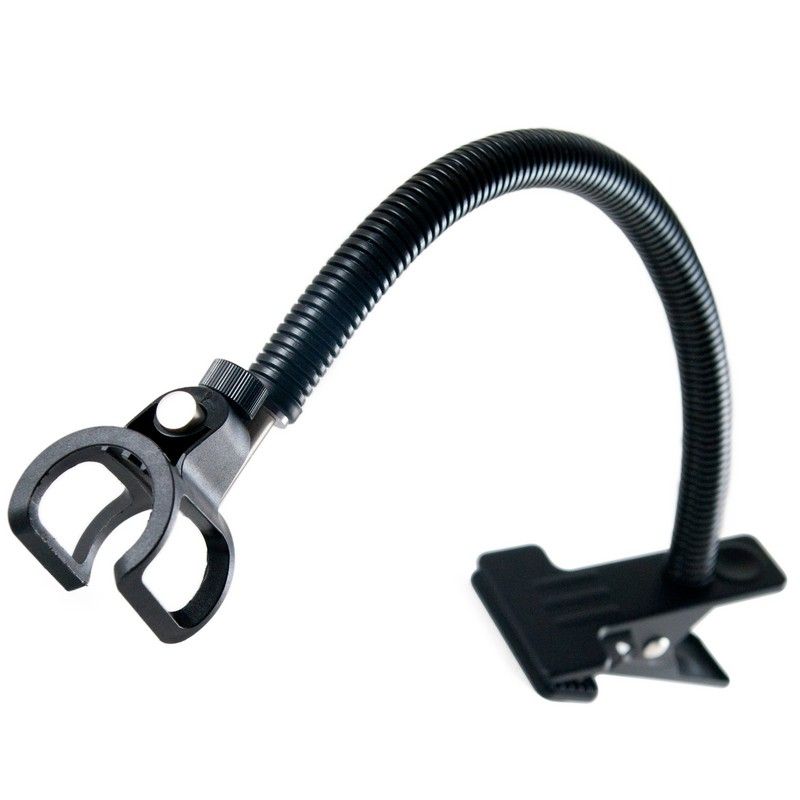 The MS23B is a desktop clamp with flexible gooseneck that can be clamped to a desktop or any other surface of up to 3cm thick.
The MS23B is a desktop clamp with flexible gooseneck that can be clamped to a desktop or any other surface of up to 3cm thick.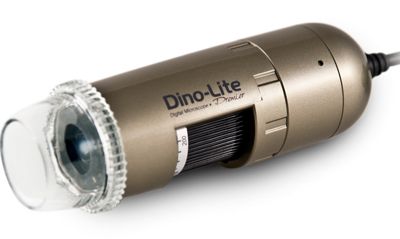 By using a special polarization filter, the AM4113ZT is the right choice when working with high glare materials such as plastics and metals.
By using a special polarization filter, the AM4113ZT is the right choice when working with high glare materials such as plastics and metals. The Dino-Lite AM7013MZT has a 5 megapixel sensor for crystal clear images, even under higher magnification. The built-in adjustable polarizer reduces glare and reflection on shiny objects.
The Dino-Lite AM7013MZT has a 5 megapixel sensor for crystal clear images, even under higher magnification. The built-in adjustable polarizer reduces glare and reflection on shiny objects.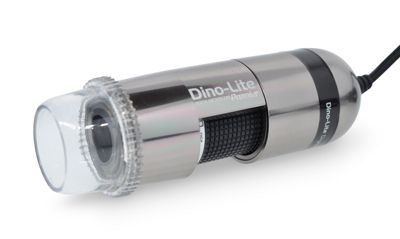 By using a special polarization filter, the AM4013MZTL is the right choice when working with high glare materials such as plastics and metals. This model features an aluminum alloy housing for enhanced protection and durability and the best look and feel.
By using a special polarization filter, the AM4013MZTL is the right choice when working with high glare materials such as plastics and metals. This model features an aluminum alloy housing for enhanced protection and durability and the best look and feel.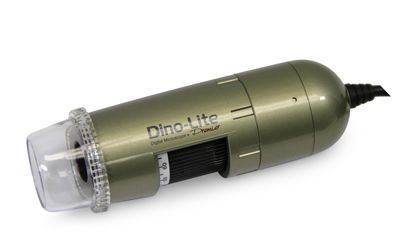 By using a special polarization filter, the AM4113ZTL is the right choice when working with high glare materials such as plastics and metals.
By using a special polarization filter, the AM4113ZTL is the right choice when working with high glare materials such as plastics and metals.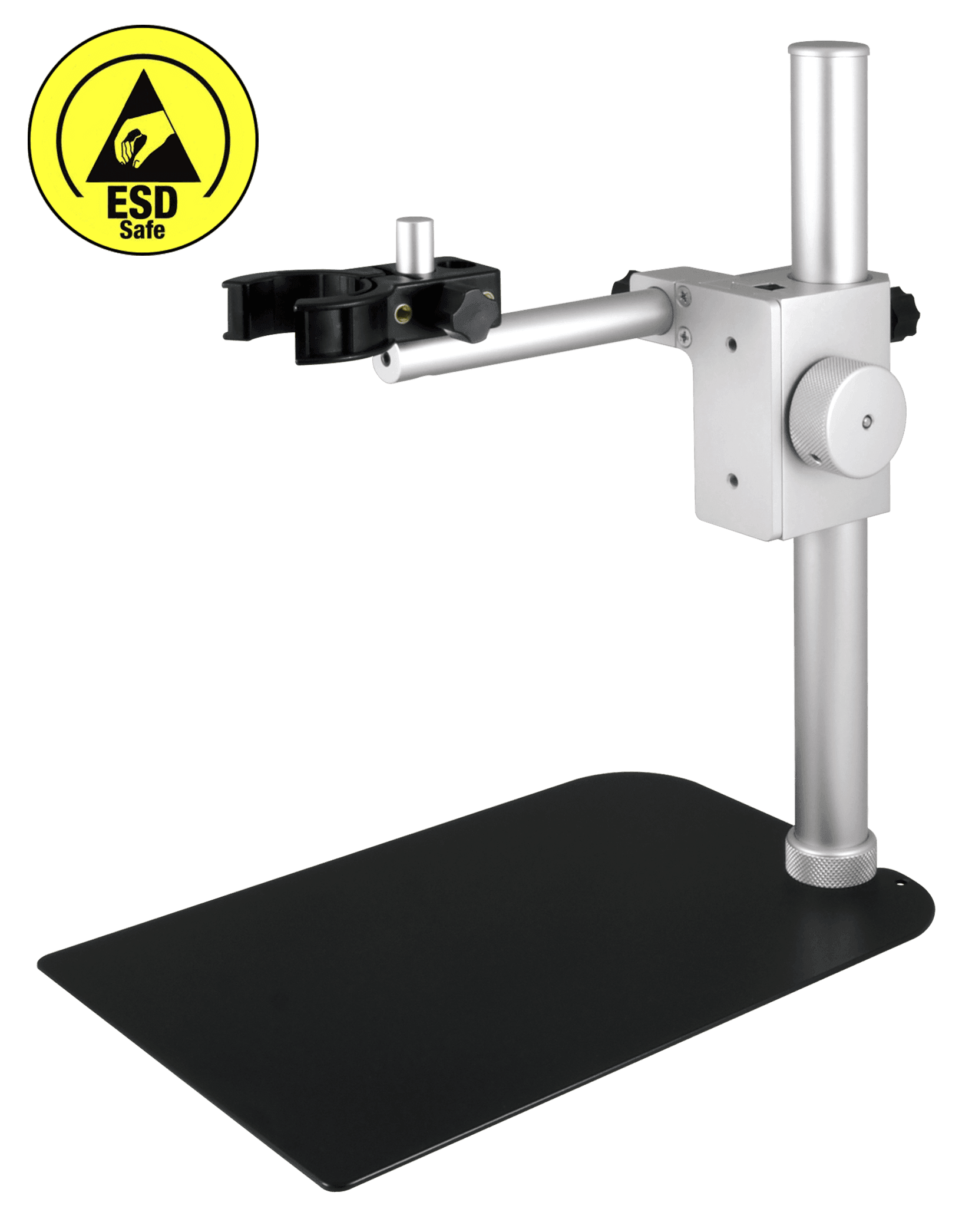 The Dino-Lite RK-06-AE stand is a sturdy and stable mid-range stand solution that can be used with all Dino-Lite digital microscopes. It is constructed of stainless steel and lightweight aluminum and offers precise fine-focus adjustment as well as a quick vertical release function.
The Dino-Lite RK-06-AE stand is a sturdy and stable mid-range stand solution that can be used with all Dino-Lite digital microscopes. It is constructed of stainless steel and lightweight aluminum and offers precise fine-focus adjustment as well as a quick vertical release function.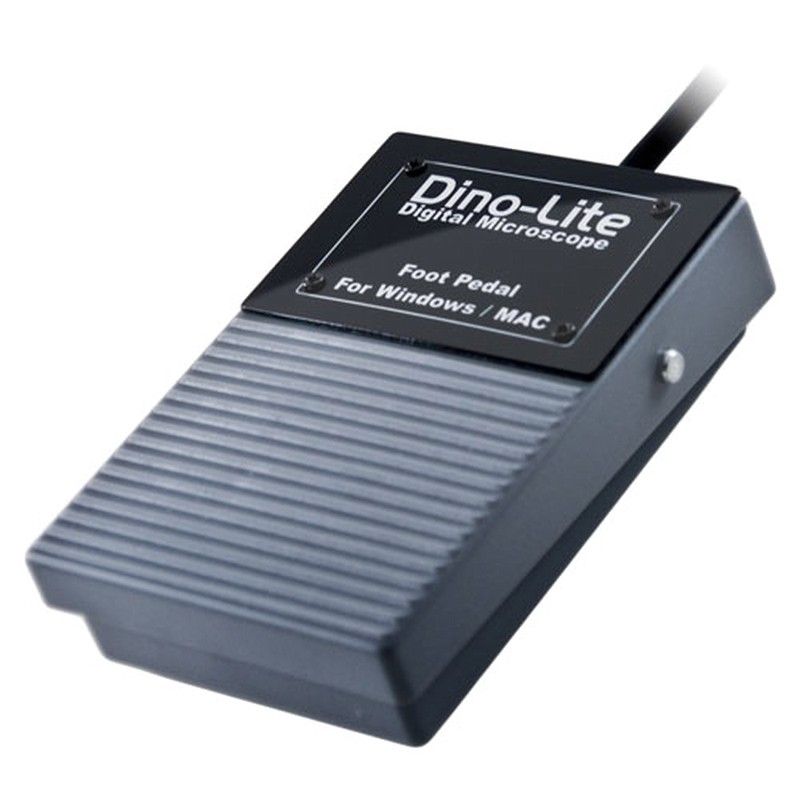
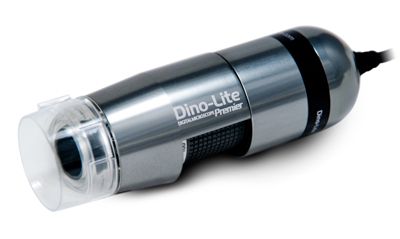 The Dino-Lite AD7013MZT has a 5 megapixel sensor for crystal clear images, even under higher magnification. The built-in polarizer reduces the shiny effect on reflecting materials, such as metals, plastics, jewelry, electronics etc.
The Dino-Lite AD7013MZT has a 5 megapixel sensor for crystal clear images, even under higher magnification. The built-in polarizer reduces the shiny effect on reflecting materials, such as metals, plastics, jewelry, electronics etc.
